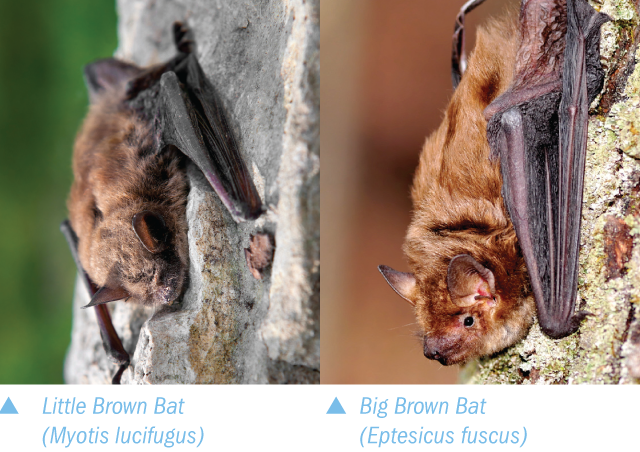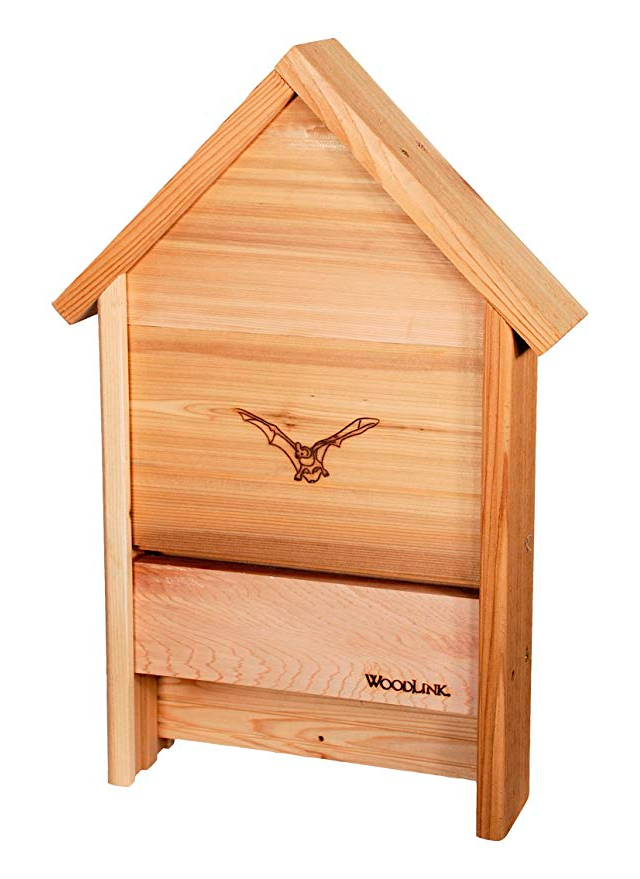Encouraging Bats
Bats: Nature’s Mosquito Patrol
A single, big, brown bat can eat 3,000 to 7,000 mosquitoes each night and can live for up to 19 years. Since bats are such an important form of natural control for mosquitoes, it is in our best interest to help them. You can do so by providing a bat house.
Minnesota’s Bat Species
The most likely occupants of bat houses in Minnesota are the Little Brown Bat and the Big Brown Bat. The Little Brown Bat is 2½—4″ in length, has a wingspan of 8–11″ and weighs about half an ounce. The Big Brown Bat is 4–5″ in length, has a wingspan of 11–13″ and weighs less than one ounce.

Installing a Bat House
Preparing the House
The most critical dimension is the ¾” width of the entry space. All inner surfaces must be roughened to permit bats to climb on them with ease. Rough outside surfaces are also preferred. Since daytime temperatures in the bat house must be very hot—about 80–90°F—you may wish to paint the bat house black so it will absorb heat from the sunlight.
Placing the House
The placement of your bat house will play a major role in its success. For example, the more exposure to sun, the better success you’ll have securing occupants. Ensuring the bat house faces east to get the morning sun is a good start, but ideally sun exposure should extend beyond the morning hours. The most successful bat houses at Como Zoo and Carver Park are mounted on a pole about 20 feet up, with full exposure to the sun all day.
Bat houses should be placed on buildings such as the side of a house or garage or they can be mounted to a pole—studies have shown that bat houses placed on trees are less likely to be occupied. The houses should be free of obstructions with at least 20′ of open space to allow the bats to locate the house and easily fly in and out. Mount the bat house at least 15′ high to keep predators out. The higher the house is placed, the greater your chance of attracting bats.

Frequently Asked Questions
Q. When is the best time to install a bat house?
A. Place your bat house by early April.
Q. When can I expect the first occupants?
A. Half of all bat houses are occupied within the first summer and up to 80% are occupied with in the first 2–3 years. However, it may take a year or two for the bats to find the house.
Q. What can I do if I don’t get any occupants?
A. If bats do not roost in your house by the end of the 3rd summer, move the house to a different location. It is also helpful to attach more than one bat house in your yard in order to provide bats with different housing options and increase your chances of having an occupied bat house. Chances of occupancy are better if bats already live in nearby buildings.
Q. Do I need to clean the house?
A. Once used, it does not need to be cleaned.

